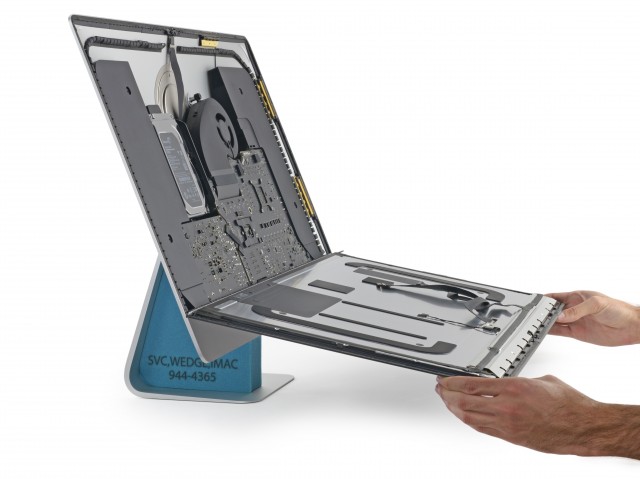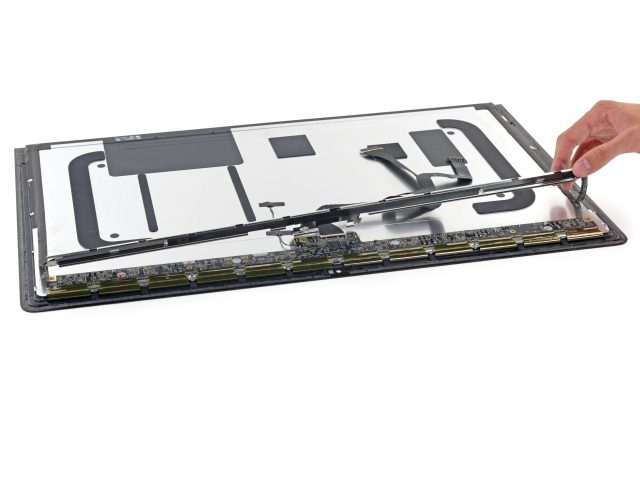
There’s new Apple hardware out, and the people at iFixit are once again doing what they do best: disassembling the living crap out of it and posting pictures. This time, they’ve carefully torn down a new Retina iMac into its component pieces, and the images are illuminating.
The Retina iMac’s construction is essentially identical to the previous non-Retina iMac. There are no screws here: the thin aluminum body is glued to the display with a long strip of custom-cut adhesive. Prying that away gives you access to the machine’s internals, but then you’re left with the conundrum of how to get the machine back together when you’re done—the factory adhesive strip isn’t very reusable once it’s been removed.
Once inside, there are plenty of user-replaceable parts—the iMac’s CPU isn’t soldered and can be swapped out if desired, as can the hard disk drive, PCIe SSD, and RAM (the RAM is actually designed to be replaced through a small external port, so you don’t have to tear the computer apart to add more memory). The Radeon R9-class GPU is attached directly to the logic board, so upgrading that after the fact is out of the question.

The interesting bits of the new iMac are, of course, the display and the stuff that makes it work. The relevant bits are mounted on a long thing PCB strip attached to the bottom of the LG-produced LCD panel, and the starring chip is what iFixit’s boffins have identified as a modified Parade Technologies DP665 LCD Timing Controller—presumably the one Tim Cook talked about during the Retina iMac’s announcement.
The rest of the teardown is pretty standard—so much so that even iFixit refers readers to the previous iMac teardown for some of the gorier details. We have our own Retina iMac right now and we’re playing with it (literally—with actual games) to see how well it works, so we’ll have another piece or two over the next few days with some more impressions on it and its shiny 5K display.
reader comments
55